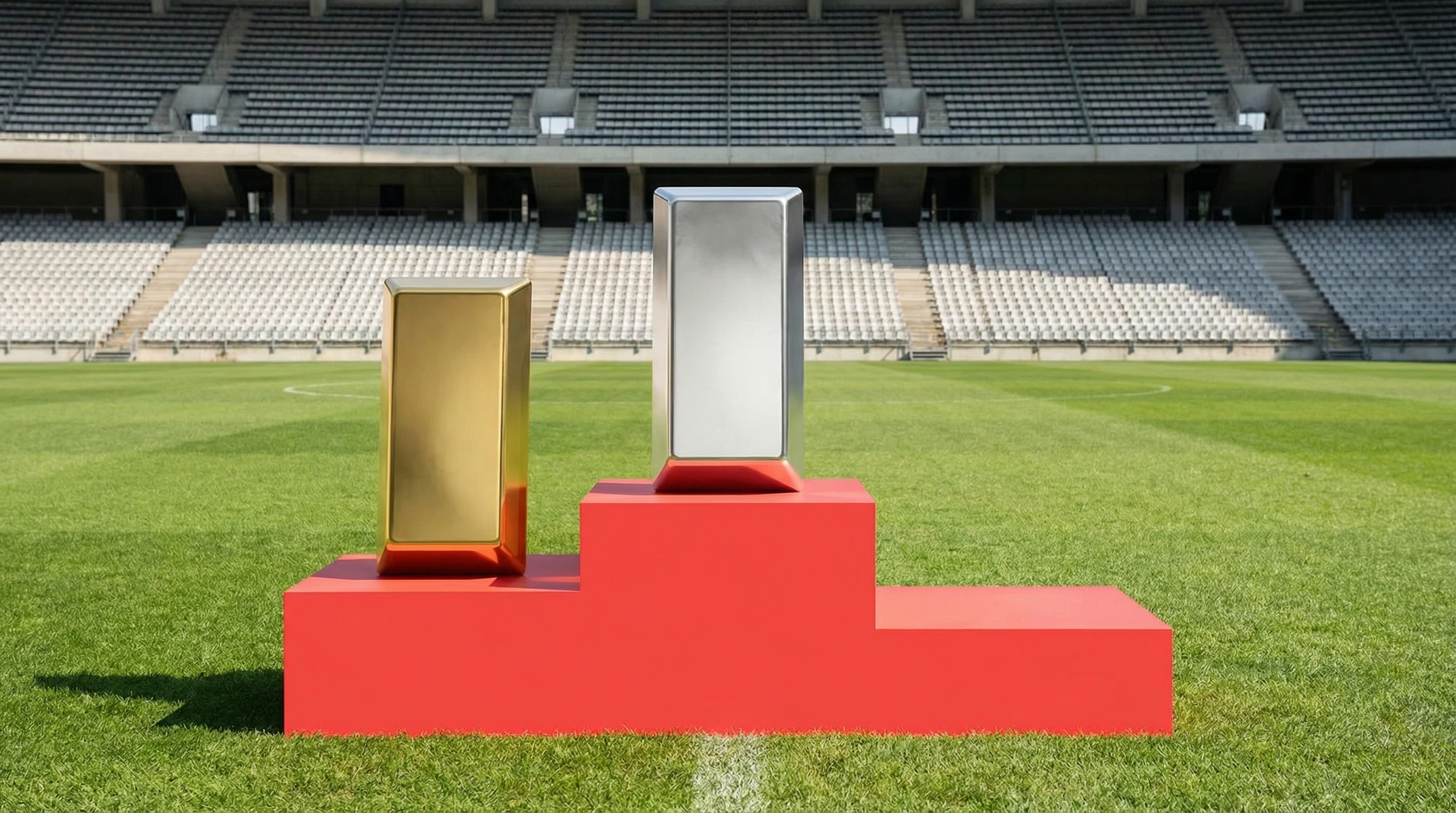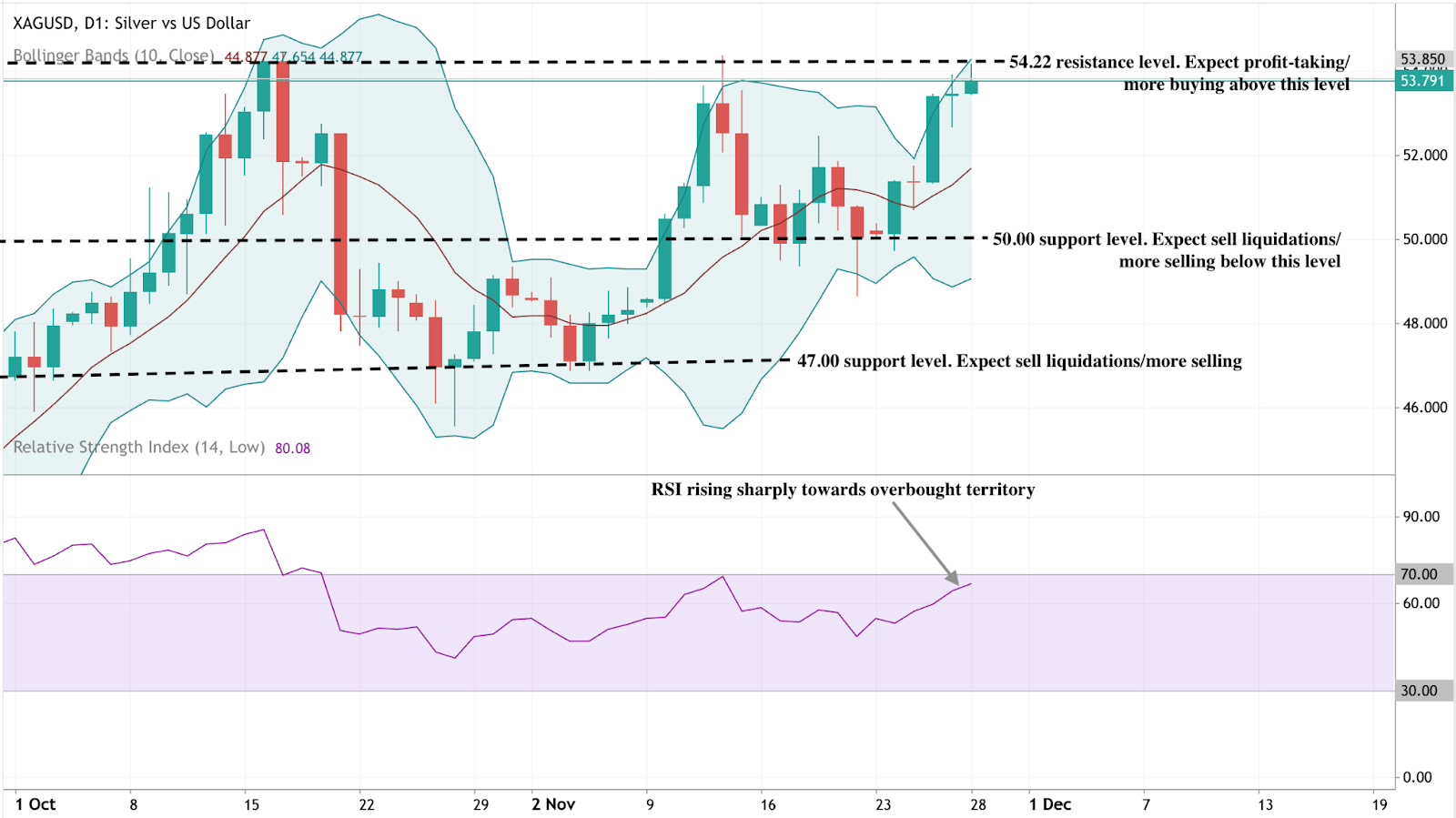Silver is quietly outshining gold: Can the run continue?

Silver quietly outshines gold - but can the run continue? Recent data showed the metal has climbed more than 7% this week, pushing XAG/USD to within a whisker of its record high as thin Thanksgiving liquidity magnifies every move. Gold, usually the headline act, has seen its volatility fade, yet silver is stealing the show with a surge that looks anything but seasonal.
Market watchers expressed the forces behind this breakout are real: weak US retail sales, collapsing consumer expectations, and an 84% market-implied probability of a December Fed cut have turbocharged demand for haven assets. Traders are now weighing whether this surge reflects a temporary holiday dislocation or the early stages of a structural re-rating. That question - whether silver’s outperformance can endure - sets the tone for the rest of the market analysis.
What’s driving silver’s surge?
Silver’s latest rally sits at the intersection of macro stress and thinning liquidity. US retail sales have increased nominally since 2021, signalling a stalled consumer engine that leaves little room for growth. The Conference Board’s expectations index has plunged to 63.2, a level that has historically preceded recessions, reinforcing the rush into defensive assets.

With investors reassessing the path of US demand, metals sensitive to economic shifts have reacted quickest - silver most of all.
The Federal Reserve’s pivot has accelerated this shift. Markets have rapidly repriced the odds of a rate cut, jumping from 50% to 84% in a matter of days.

Comments from New York Fed President John Williams and other officials have signalled readiness to ease if momentum continues to weaken. As Treasury yields retreat towards one-month lows and the dollar softens, non-yielding assets enjoy an outsized advantage. Silver’s leverage to these conditions helps explain why its move has been so immediate - and so dramatic.
Why it matters
According to analysts, silver’s rise matters not simply because of the speed of the rally but because of what it reflects. Despite gold’s reputation as the ultimate haven, silver has outperformed it by a wide margin, climbing 163% since October 2023 and hitting a record high of $54.38 earlier this month. That outperformance is increasingly difficult for institutions to ignore because silver sits at the crossroads of monetary hedging and industrial utility.
They also warn that the price action is exposing deeper anxieties. Tim Waterer, Chief Market Analyst at KCM Trade, notes that the market is reacting to “a chorus of dovish remarks” as soft macro indicators pile up. His assessment points to a broader problem: silver is rallying not because growth is strong, but because confidence in the trajectory of the US economy is fading. Metals are absorbing that uncertainty in real time.
Impact on markets and industry
For traders, silver’s surge complicates positioning as markets thin out for the holiday period. Lower participation amplifies intraday moves, making it harder to hedge directional risks. On platforms like Deriv MT5, where execution speed and precise trade sizing are crucial during volatile conditions, this environment requires traders to stay vigilant. Many are increasingly relying on tools such as the Deriv trading calculator to measure potential profit, swap charges, and position exposure before taking on silver’s sharp intraday swings.
But the deeper story sits within the industrial sector. Silver demand from solar panel manufacturing jumped to 243.7 million ounces in 2024, up from 191.8 million in 2023 and more than double the level seen in 2020.
With global solar capacity on track to reach nearly 1,000 GW annually by 2030, demand is expected to rise by another 150 million ounces per year. Supply, however, remains constrained: the majority of global silver output is a byproduct of copper, zinc, lead or gold production, making it slow to adjust to price signals. Mining Technology estimates that global production could fall to 901 million ounces by 2030 - a structural deficit that strengthens the long-term case for higher prices.
Expert outlook
Pro traders expressed the sustainability of silver’s run hangs on three core factors: the Fed’s next move, the trajectory of US consumption, and the pace of industrial expansion. If policymakers confirm the December pivot, the combination of lower yields and a softer dollar could deliver the catalyst needed to take prices into new record territory. And with recession signals flashing more brightly, demand for haven assets is unlikely to evaporate quickly.
Yet nothing is assured. A sudden rebound in consumer activity or an inflation surprise could slow expectations of policy easing. Industrial users may eventually push back against higher prices, although solar demand appears robust enough to absorb short-term volatility. For now, traders are closely monitoring incoming macroeconomic data and Federal Reserve communications. A decisive break above the previous peak could signal that the market sees a fundamentally new pricing regime for silver.
Key takeaway
Silver’s surge is rooted in real economic signals, from weakening US data to rising expectations of near-term rate cuts. The metal has outperformed gold and is now flirting with historic highs, supported by both haven flows and a powerful industrial story. Whether the run continues depends on the Fed’s messaging and the resilience of US households, but the broader trend points towards tightening supply and enduring demand. The next few weeks will reveal whether silver is merely rallying - or repricing for a new cycle altogether.
Silver technical insights
At the start of writing, Silver (XAG/USD) is trading around $53.79, pushing aggressively higher as it approaches the major $54.22 resistance level. This zone is likely to attract profit-taking, though a clean breakout could spark fresh momentum buying given the strength of the current rally.
On the downside, key supports sit at $50.00 and $47.00. A move back below either would indicate fading bullish pressure and could trigger sell liquidations or a deeper retracement, especially if price slips through the midpoint of the Bollinger Band channel.
Momentum remains strong, with the RSI rising sharply to around 80, firmly in overbought territory. This signals that buyers are in control but also warns of potential short-term exhaustion. While the uptrend remains intact, silver may be vulnerable to pullbacks or sideways consolidation if overbought conditions persist.

The performance figures quoted are not a guarantee of future performance.



